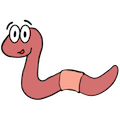[Note- Here are the notes I took that day, edited for clarity]
Notes – Day 3 Session 1
Science
1 1/2-hour session — limit 4 presenters
Preschoolers
11/17/2017 8:00 AM – 9:30 AM Room B213 Georgia World Congress Center
Alissa Lange, Assistant Professor, East Tennessee State University; Barbara Sack, Teacher Coach, Passaic Public Schools; Hagit Mano, EC STEM Specialist, NIEER/Rutgers University
In this presentation, we will explore what is engineering, how can it be done well in preschool, and effective strategies and activities to do so. We will demonstrate how engineering can cut across ALL key content areas of science in early childhood (i.e., life, physical, and earth), and highlight the research that illustrates the value of early science and engineering for young children in preschool and beyond. We will use a variety of active, hands-on, classroom-friendly activities and view videos that illustrate best-practice strategies for ensuring that all children benefit from powerful engineering and science learning experiences. Resources come from our SciMath-DLL project, a professional development model co-created with educators to provide supports in math and science for teachers of preschoolers, including dual language learners (DLLs). Participants will engage with materials and activities in whole group and small groups that illustrate: 1) examples of engineering across each major science content area; 2) teaching strategies that best promote engineering thinking and practices and rich science inquiry skills, and; 3) the value of incorporating language and literacy into engineering explorations intentionally in order to engage all children, including dual language learners. Participants should leave this workshop understanding how engineering concepts can be implemented in preschool to promote engineering processes, concepts, and skills that encourage children to think and do like an engineer.
engineering – find solutions to perceived problems at preschool
enegineers SLIDE
-apply their knowledge to improve or invent technologies that improve our everyday lives
-apply their knowledge (of science and math) and cognitive processes (the design process)
They presented us with a challenge, then asked us questions:
what did you need to know [to complete this activity]? {rubber band to stretch over cup without touching it}
used materials and characteristics about them
the gift of time and materials
each experience will be different
which solution was correct – all/any
engineering [process works like this:]
[circular]
identify problem
brainstorm solutions
predict and plan
revise
test
share
research shows when you offer these opportunities they will begin to think logically
engineering in preschool
– civil
– mechanical
– chemical
– electrical
– computer
ramps
civil engineers – houses skyscrapers etc
biological engineering mechanical with a biological solution
have a need
if a kid comes to you with a problem – ask what their ideas are to solve it
if we have a plant way up high, how do we water it?
but it can happen anywhere
magnets – what can you do with the magnets
they might come up with their own problems
but sometimes it is nice to provide one for them
providing a rich environment with a variety of materials and tools
let children experience the engineering process
explore possible solutions
explaining their reasoning
testing and refining their solutions
what is the value to get the kids to talk about their thinking?
give all of the children a chance to talk
descriptive language skills
it develops their logical thinking
it lets you know about what they know
modifications..
For all learners
Scaffolding
– type of language supports
– level of complexity
– amount of guidance
how can you vary this to work at different levels
next generation of science standards
physical life and earth sciences
plants, animals, water to support life
what plants need to survive?
language and questions – materials – differentiation
[ask the solution before we go outside]
has kids work together
have kids talk to each other
“what do you notice about that?”
She didn’t give them the answers
had them pay attention to details
[get life like bug toys for kids]
enough supplies so each group was able to experiment on their own
having opportunities to change their answer
Not saying “That’s wrong”
didn’t judge their ideas
reflected – clarifying the problem
earth and space science
monitoring changes in weather patterns is part of earth and space science
we need to measure the wind outside but we don’t have a tool to do that
– bubbles
– flags or hanging in trees
technology is not just media
build a windsock
-paper towel tubes tape and streamers
building technology
wind chimes – measurement different sound
1- giving them the solution
giving them materials
2- asking how can we bud
engineering – look at materials in art area which will you choose to build the sock?
Ask “Why did you choose ____?”
if they choose do we say it is wrong?
No- test it and let them see what happens
if you run out of time, then save it for another day
[could I find a problem for each class?]
materials – limit choices
kid wanting to use all materials – set limits
test one at a time
what will you like
if they use all the materials, then what will the other children use?
social problem – ok for johnny to take al the google eyes?
3 physical science – ramps
want to hit a target using a ramp as apart of a game
had week of exploring materials
how many blocks do we want to use?
[What do you do with kids who give up or get frustrated]
what you to tell them the answer
Further resources:
www.mos.org/drop-in-activities/design-challenges
Kathy Hirsh-Pasek [amazon link]
NAEYC interest forum
